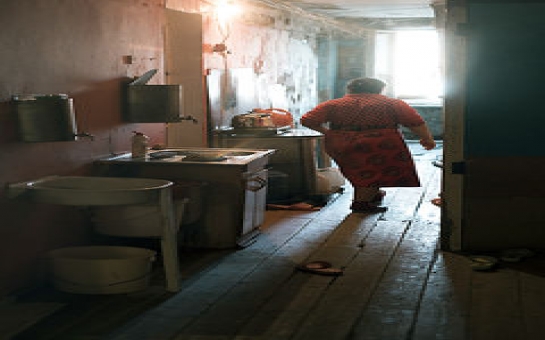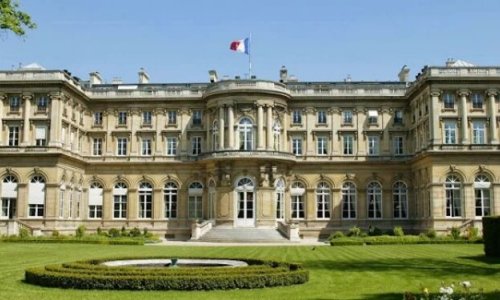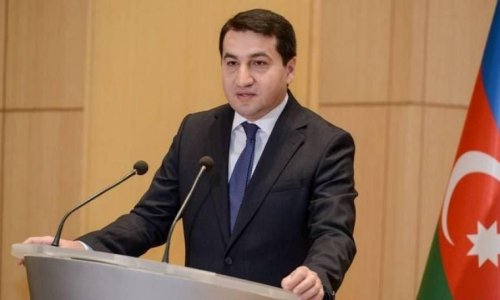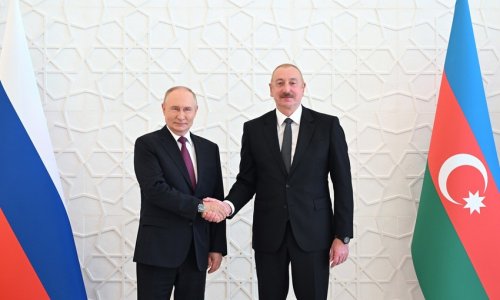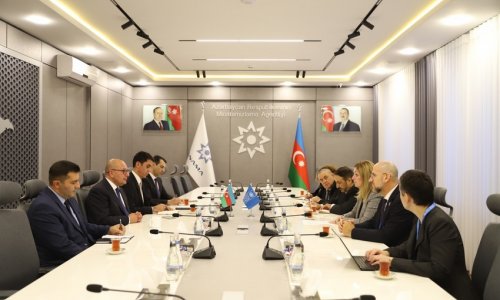Nearly 20 years after aceasefire brought a halt to all-out warfare in Nagorno-Karabakh, theAzerbaijani government is still grappling with the challenge of accommodatingthe country’s 700,000 Internally Displaced Persons, without encouraging them toforget their former homes.
Since coming to power in2003, President Ilham Aliyev -- whose father, the late president Heydar Aliyev,signed the 1994 Karabakh ceasefire agreement -- has allocated hundreds ofmillions of manats annually from the $35-billion State Oil Fund of Azerbaijanto build housing and provide benefits to IDPs. In 2012, the Fund provided 300million manats (about $382.45 million) for this purpose. Azerbaijani IDPs constitute one of the world’s largest IDPpopulations.
According to the StateCommittee on Refugees and IDPs, over the past decade roughly 37,000 families(more than 160,000 people) have been resettled in 79 new apartment buildingsand settlements, mostly around the capital, Baku. Tent settlements no longerexist.
Both the Brussels-basedInternational Crisis Group (ICG) and the US State Department have praised thegovernment for its IDP-housing campaign.
Yet while the government spentabout 3 percent of its overall budget on IDP-accommodation in 2012, the highestpercentage in the world, according to the ICG, the new residences come with acatch. Registered IDPs cannot sell, give as a gift or transfer the apartments;they are deemed temporary shelters and the government retains sole ownership.
The government continues tostress that the IDPs eventually should return home. Some Azerbaijani observersbelieve this policy position encourages the state to retain ownership ofIDP-occupied housing so that it can potentially evict IDPs upon the resolutionof the Karabkah conflict, and coerce them to return to Karabakh, or thesurrounding seven regions that are now under Armenian and separatist-Karabakhioccupation. Presently, negotiations arestalemated on apermanent political settlement of the Karabakh conflict.
Nearly half of Azerbaijan’sIDPs, according to the government, live in Baku, a city of over 2 millionpeople. As the country’s economic hub, conditions in Baku are a far cry fromthe hardscrabble, rural regions that the IDPs fled over two decades ago.Children born in Baku and elsewhere after the 1988-1994 conflict, but who arestill counted as IDPs, make up a large percentage of these Azerbaijanis.
“Of course, not all IDPswill be ready to return to their regions,” commented human-rights lawyer IradaJavadova, director of the Public Union for Human Rights’ Education, a Bakunon-governmental organization. “But the government wants them to return.”
IDPs interviewed byEurasiaNet.org all expressed a willingness to return home. But that does notappear to be the prime objective of many. The protests that IDPs occasionallystage in Baku tend to focus on improving their existing living conditions,rather than on issues concerning their potential return to Karabakh.
Azerbaijan’s 125-memberparliament contains 11 deputies registered as IDPs – all members of the rulingYeni Azerbaijan Party’s faction. But these MPs don’t seem eager to press IDPpolicy issues. Like many others, they have acclimatized to their new locationand role in life.
“Some IDPs today are betteroff than the non-IDP poor population, and some IDPs’ socio-economic situationdoes not differ much from the socio-economic situations of other poor andvulnerable non-IDP groups,” commented one Karabakh-conflict expert who askednot to name his place of employment.
By not taking into accountthe fact that many IDPs have economically reoriented their lives, the government’s“blanket approach toward IDPs” is “outdated” and does not make efficient use ofbudgetary funds, the expert said.
“Return should not beviewed as the only viable option for IDPs,” he continued. “The IDPs, asfull-fledged citizens, should be given a free choice as to what individualchoices they would like to pursue.”
Officials, with their eyeson the pledge to enable ethnic Azeris to return to Karabakh and the occupiedterritories, do not address this criticism.
No matter what theirsocio-economic situation, registered IDPs remain so for life – receivingshelter, free utilities, free university tuition, lower income taxes and amonthly payment of 16 manats ($20.40). IDP women who marry men not registeredas IDPs lose these benefits, however.
Despite the efforts made bythe government, there still is an imbalance in the distribution of IDPbenefits. Not far from expensive private houses in Baku’s central neighborhoodof Yasamal, stand the decrepit former dormitories of Azerbaijan State TechnicalUniversity. It’s a complex that houses 1,000 IDP families. With broken windows,peeling plaster and pungent odors from a malfunctioning sewage system, the 10five-story buildings, first converted for IDP use in 1993, appear more like aset from a war movie than actual residences.
“We all are already crazypeople. Everybody has neurosis from the conditions we are living in,” saidMaryam Huseynova, a retired schoolteacher from the Fizuli region who lives withher 10-member family in two small rooms. The building has one bathroom andtoilet on each floor. Their situation, though, used to be worse; the governmentand “some Norwegians” helped improve electricity and water supplies a few yearsago, said Huseynova.
Those still living in thedormitory cannot afford to move out. Huseynova’s neighbors, the Aliyevs, andtheir three children, live in one room, and survive on 54 manats ($68.84) permonth, including government benefits, along with money earned by the fatherfrom doing odd jobs.
By the end of 2015, thegovernment plans to move some 90,000 people out of such dormitories and into asettlement being built on 380 hectares of land in the Baku suburb of Gobu,according to the State Committee on Refugees and IDPs. Another 500 hectareswill accommodate 110,000 IDPs currently living in military bases, schools,kindergartens, sanatoriums, and summer camps.
The Yasamal dormitoryresidents expect to be resettled by early 2015 into one of these settlements,which feature buildings with one to four-bedroom apartments and all utilities.Whether or not the plan considers them as individuals with the right to choosefor themselves, Mariam Huseynova and her neighbors are ready to move. “We havespent 20 years here already,” Huseynova said. “It is enough.”
(Eurasianet)ANN.Az

